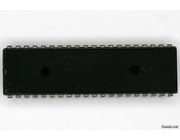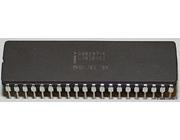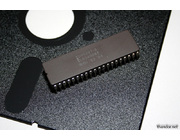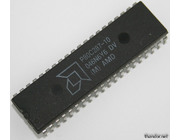I bought this 287 and by chance it has the same production date as my other 10MHz 287 which has been in my collection for years. > Read more
The slowest 287 you can find. These FPU's can pair up with 286 and early 386 (1985, 1986) systems. At the time when Intel released their 387 the 386-motherboards were equipped with the new socket for the 387 and dropped the 287-support.
Later models were dubbed 80287XL and feature a 387 architecture. They can still work with 286 CPU's. > Read more
Being made in 1986 I figured this CPU would be a nice photo-object in combination with an old 5,25" floppy disk. It's 2MHz faster than the 6MHz model but technically it's identical.
The 287 is able to do floating point calculations (FPU) and can be installed next to a normal 286. Early 386 boards allow you to pair up a 386 with a 287. Modern 386 boards only have sockets for 387's. > Read more
This a co-processor (FPU; for floating point calculations) for the 80286 processors. It's similar but not pin-compatible to the 8087. The number of instructions and execution time of instructions is practically identical with the 80287 compared to the 8087. The main difference between the 80287 and 8087 is the way how the CPU communicates / interfaces with the co-processor.
You can run a 10MHz 80287 FPU with a 12MHz CPU. This is because the CPU divides the base clock by 1/2 and the FPU by 1/3 meaning that the FPU always runs a few MHz slower. > Read more



